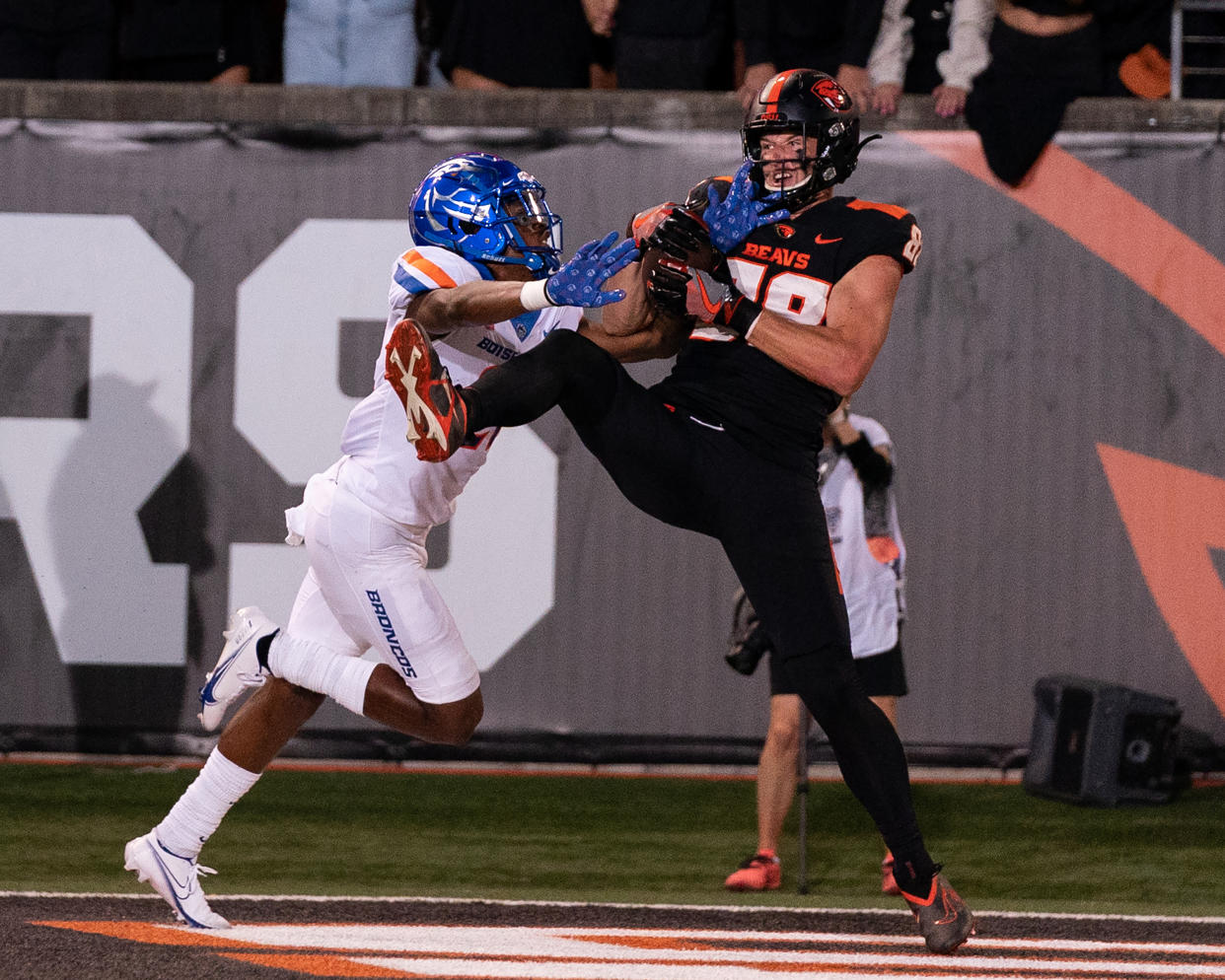2023 NFL Draft: Tight ends dominate Round 2, but fantasy managers will likely have to wait for results
The second round of the 2023 NFL Draft offers plenty of fantasy juice. We just might have to be patient.
That's how things go with young tight ends. It's a wait-for-it position, the slow-developing Polaroids.
The tight ends were the skill-position story in Friday's second round, with five different tight ends called among the 32 selections. The round also saw four wideouts, one running back, and mercifully, one quarterback — Will Levis, the green room leftover from Thursday — make their way onto the big board.
The early tight ends picked were well-known commodities. Let's take a closer look at the fresh faces at a position that desperately needs an injection of talent.
Sam LaPorta (Pick 34, Lions)
LaPorta comes from the University of Iowa, a tight end factory. George Kittle and Noah Fant were Hawkeyes, and the Lions took another Hawkeye, T.J. Hockenson, just four years ago. LaPorta had 111 catches for 1,327 yards in his last two college seasons.
Michael Mayer (Pick 35, Raiders)
Mayer was a productive player from the moment he stepped into the Notre Dame lineup as a freshman. Mayer is out of the Kittle mold, just as happy blocking as he is catching a pass. Jimmy Garoppolo is sure to love him.
Luke Musgrave (Pick 42, Packers)
Musgrave was one of two new toys procured for the Green Bay offense in this round, as the team stocked the fridge for new QB Jordan Love. Green Bay later took WR Jayden Reed from Michigan State with the No. 50 pick. Aaron Rodgers has to be wondering: where was this skill-focused drafting over the last few seasons? Musgrave offers a big catch radius (6-foot-6, 253 pounds) and 4.6 speed. Matchup problem.

Luke Schoonmaker (Pick 58, Cowboys)
Schoonmaker wasn't used much as a pass-catcher at Michigan (52 grabs the last two years), but playing time is available with Dalton Schultz leaving town.
Brenton Strange (Pick 61, Jaguars)
Strange completed the positional run, another block-first option. His best season was his senior year at Penn State, when he posted a 32-362-5 line over 13 games.
And since we've discussing tight ends, we owe a nod to Dalton Kincaid, who was selected in Thursday's first round. Buffalo tabbed Kincaid with the 25th overall pick after watching him rack up a 70-890-8 line as a junior for Utah. Kincaid also had eight touchdowns — on just 36 catches — in his sophomore season.
It's a blast to watch tight end highlight tapes — these guys are usually the biggest skill players on the field and they're generally runaway freight trains down the seam. If you like broken tackles and angry runs, tight ends check those boxes.
But we must be mindful that most fantasy tight ends take some time to hit their stride. And rookie tight ends are almost always a poor fantasy bet.
Let's consider what rookie tight ends have done in the internet fantasy era, culling results from 2000 to present.
Only seven different rookie tight ends have managed 50 catches in their first season over this 22-year sample. Jeremy Shockey's 74 catches lead the way, followed by Kyle Pitts (68), Evan Engram (64) and Pat Freiermuth (60). John Carlson, Tim Wright, and Jermaine Gresham all landed in the 50s.
If yards are your thing, it's even more barren. Pitts had 1,026 yards in his rookie year (but, notoriously, just one touchdown), while Shockey (894), Engram (722), and Carlson (622) also topped 600 yards. No one else got past 571 yards in their opening year.
If you're willing to chase some touchdown deodorant, things get a little rosier. Rob Gronkowski spiked 10 times as a rookie, and Hunter Henry had eight touchdowns. Freiermuth and Joseph Fauria both had seven touchdowns; Engram, Heath Miller, O.J. Howard, Aaron Hernandez, and Chris Cooley all collected six scores.
Let's boil it down to fantasy points — only Gronkowski, Engram and Pitts tallied more than 100 points in basic scoring, while Pitts, Engram, Shockey, Gronkowski and Freiermuth were the 150-and-up scorers in full-point PPR.
Plenty of highly-touted tight ends, including first-round picks, needed time to find their sea legs. Greg Olsen eventually became a star, but was a modest 39-391-2 man his rookie year. Vernon Davis managed 20-265-3 in his 10-game opener. Dallas Clark wasn't an instant star, despite life with Peyton Manning: he returned a modest 29-340-1 line. Eric Ebron cost the 10th overall pick, but totaled a disappointing 25-248-1. We could play this game all day.
Perhaps Travis Kelce would have smashed this theme; after an injury-ruined rookie year (he played just one snap due to a knee injury), he posted a snappy 67-862-5 line as a sophomore. He's obviously been unstoppable ever since. Mark Andrews and Kittle both had their breakout years in their second seasons.
Often rookie running backs are plug-and-play producers, and we're trained to expect gradual liftoff from first-year receivers; often they become impact players in the second half of their rookie years. Young tight ends? Usually it's best to revisit these guys in a later season. Give them some time to figure out a nuanced and challenging position.
